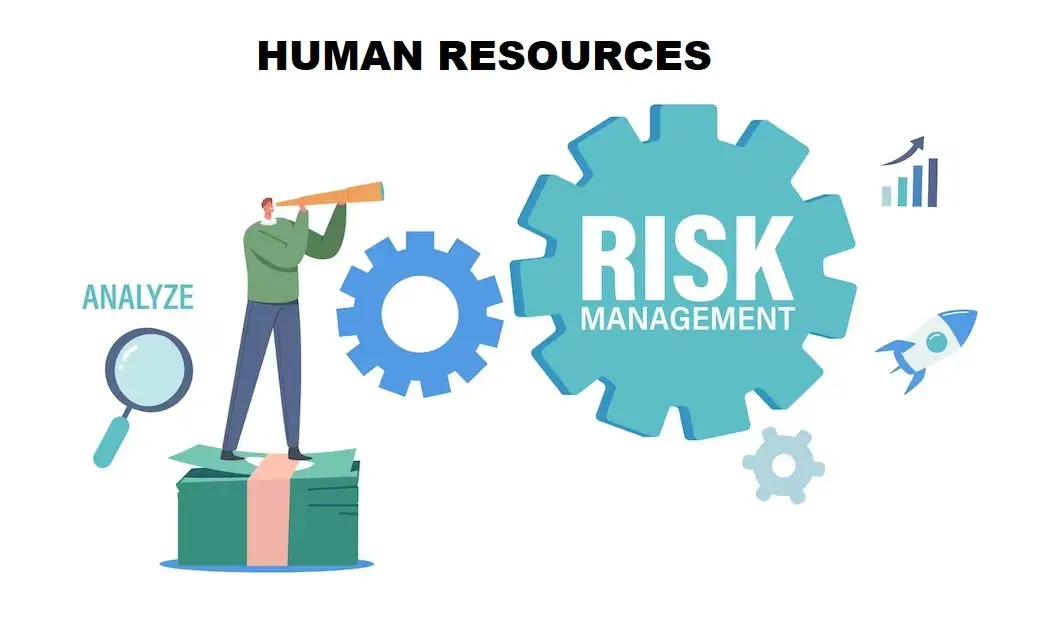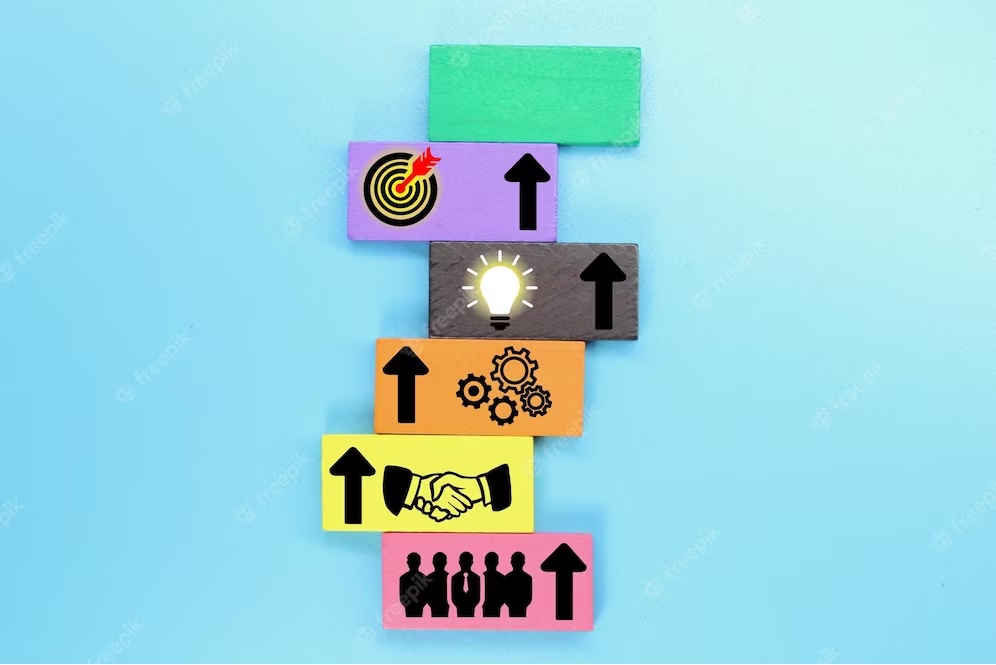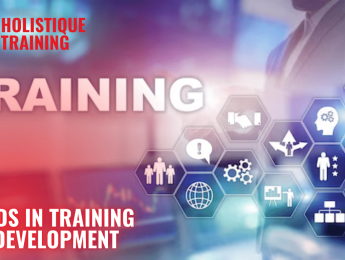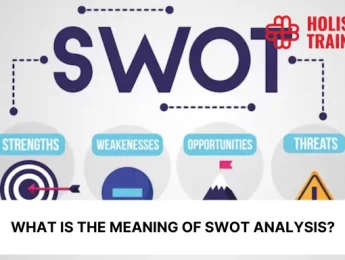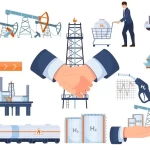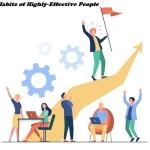In an era characterised by rapid change and innovation, Human Resources (HR) management has evolved far beyond its traditional administrative role. Today, it plays a pivotal role in driving organisational success. Among the many emerging paradigms within HR, Sustainable Human Resources Management (SHRM) stands out as a guiding light for organisations seeking to make a lasting impact on both their workforce and the environment. In this comprehensive exploration, we will delve into the essence of SHRM, its significance, actionable implementation steps, and its synergy with Artificial Intelligence (AI).
What Is Sustainable Human Resources Management?
Sustainable Human Resources Management (SHRM) is the strategic integration of environmental, social, and economic considerations into HR practices and policies. Its goal is to create long-term value for both organisations and society as a whole. Unlike traditional HR practices, which often focus on short-term goals, SHRM takes a holistic approach, considering the well-being of employees, the community, and the environment. It strives to balance the triple bottom line of people, planet, and profit.
At the core of SHRM lies the acknowledgment that an organisation's success is intricately linked to the well-being and satisfaction of its employees. By promoting a culture of inclusivity, diversity, and work-life balance, SHRM fosters an environment that not only attracts but also retains top talent. Moreover, it extends beyond the workplace, addressing societal concerns and environmental impacts, thus establishing a harmonious relationship between the organisation and its ecosystem.
SHRM Triple Bottom Line
Sustainable Human Resources Management (SHRM) places a strong emphasis on the triple bottom line, which encompasses the interconnected aspects of people, planet, and profit. Let's take a closer look at each component of this holistic approach in the table below:
Table 1: The Triple Bottom Line of Sustainable Human Resources Management
Why Is SHRM Important?
Sustainable Human Resources Management (SHRM) is not merely a buzzword; it's a fundamental shift in the way organisations perceive and practice HR management. Here are several compelling reasons why SHRM is vitally important in today's business landscape:
Employee Well-being and Retention
At the core of SHRM is a profound recognition that employees are the heart of any organisation. By prioritising their well-being, SHRM creates an environment where employees thrive. This extends beyond competitive salaries and benefits. SHRM promotes a culture of inclusivity, respect, and empathy. It emphasises the importance of work-life balance, acknowledging that employees have lives outside of the workplace. When employees feel valued, supported, and heard, their job satisfaction and commitment to the organisation naturally increase. As a result, SHRM contributes significantly to higher employee retention rates.
Enhanced Reputation
In an age where consumers, investors, and potential employees are increasingly conscious of corporate social responsibility, SHRM becomes a potent tool for enhancing an organisation's reputation. Companies that actively embrace sustainable practices and demonstrate a commitment to social and environmental responsibility are viewed more favourably. Such organisations are seen as ethical leaders in their industries. This positive reputation not only attracts customers who prefer to support responsible businesses but also draws in top talent looking for an employer with a strong moral compass. A positive image, in turn, can lead to increased customer loyalty, improved brand value, and a competitive edge.
Long-Term Financial Performance
While immediate financial gains are often the focus of traditional business models, SHRM adopts a longer-term perspective. Sustainable organisations tend to perform better financially over time. SHRM practices have a direct impact on the bottom line. By nurturing a satisfied and engaged workforce, organisations experience increased productivity, reduced turnover rates, and substantial savings on recruitment and training costs. Furthermore, operational efficiency improvements, driven by sustainable practices, contribute significantly to better financial outcomes. In essence, SHRM aligns financial prosperity with responsible and ethical business practices, emphasising that long-term profitability can be achieved through people-centric and planet-friendly approaches.
Reduced Environmental Footprint
SHRM extends its reach beyond the confines of the office. It is a philosophy that actively promotes eco-friendly practices. This includes measures such as energy conservation, waste reduction, responsible sourcing, and sustainable commuting options. By adopting these practices, organisations not only minimise their negative impact on the environment but also demonstrate their commitment to being responsible stewards of the planet's resources. This alignment with sustainability efforts positions the organisation as an eco-conscious entity, garnering respect and support from environmentally conscious consumers and stakeholders.
Regulatory Compliance and Risk Management
In today's complex regulatory landscape, staying ahead of evolving laws and compliance standards is paramount. SHRM equips organisations with the tools and mindset needed to navigate this ever-changing terrain. By proactively integrating sustainability and compliance into HR practices, organisations reduce the risk of legal complications and associated fines. SHRM ensures that the organisation remains agile and adaptable in the face of evolving regulations, making it better prepared to respond to changes in the legal landscape.
Talent Attraction and Competitiveness
In today's highly competitive job market, attracting and retaining top talent is a constant challenge for organisations. SHRM serves as a magnet for skilled professionals seeking employers with a strong sense of purpose. Companies that prioritise sustainability and employee well-being are more likely to stand out as desirable workplaces. Talented individuals are drawn to organisations that not only offer competitive compensation but also align with their values. By embracing SHRM, organisations can build a reputation as an employer of choice, ensuring a steady influx of high-calibre talent that can drive innovation and growth.
Resilience in Times of Crisis
The world is no stranger to crises, whether they be economic downturns, global pandemics, or environmental disasters. SHRM equips organisations with the resilience needed to weather such storms. Through its focus on employee well-being, SHRM fosters a resilient workforce that can adapt to changing circumstances and maintain productivity even during challenging times. Moreover, the sustainable practices advocated by SHRM, such as responsible resource management and waste reduction, can make organisations more resilient in the face of supply chain disruptions and resource scarcity. This resilience enhances an organisation's ability to navigate crises and emerge stronger on the other side.
Positive Social Impact
SHRM extends its influence beyond the organisation itself and into the broader society. By actively engaging with social responsibility initiatives, organisations practising SHRM can make a meaningful difference in their communities. Whether through volunteering, charitable contributions, or partnerships with local organisations, SHRM encourages a positive social impact. Such initiatives not only benefit the community but also enhance the organisation's reputation as a socially responsible entity. Employees who see their organisation contributing positively to society often feel a greater sense of pride and purpose, leading to increased motivation and job satisfaction.
In summary, SHRM's importance is multifaceted, touching on aspects of talent management, resilience, and societal impact. It serves as a compass guiding organisations toward a more sustainable, ethical, and prosperous future, ensuring they remain not only competitive but also socially and environmentally responsible in an ever-evolving world.
Actionable Steps to Implement Sustainable Human Resources Management
Implementing Sustainable Human Resources Management (SHRM) requires a systematic and holistic approach that integrates sustainability principles into various HR functions. Here's a detailed breakdown of the actionable steps organisations can take to embark on this transformative journey:
1. Leadership Commitment
Leadership buy-in is paramount. Executives must not only endorse the idea but also champion it. They should actively participate in defining sustainability goals and integrating them into the organisation's core values and strategic objectives. This commitment should be communicated clearly to all levels of the organisation, emphasising that sustainability is not just an initiative but a fundamental part of the company's identity.
2. Inclusive Culture
Fostering an inclusive and diverse workplace is integral to SHRM. This begins with creating a culture where all employees feel valued and respected, regardless of their background, gender, or ethnicity. HR should work closely with leadership to develop and implement diversity and inclusion initiatives. These may include unconscious bias training, mentorship programmes, and employee resource groups focused on various aspects of diversity. The goal is to ensure that the workplace reflects the richness of perspectives present in society.
3. Employee Development
SHRM recognises that investing in employees' development is a win-win proposition. HR should provide ample opportunities for skill development and growth. This can be achieved through mentorship programmes that pair experienced employees with those looking to advance in their careers. Training initiatives should be aligned with organisational goals, focusing on enhancing employees' capabilities and preparing them for leadership roles. Career pathways should be clearly defined, allowing employees to see a future within the organisation.
4. Work-Life Balance
Promoting a healthy work-life balance is essential for employee well-being. HR can facilitate this by offering flexible work arrangements, such as remote work options or flexible hours. Wellness programmes should be designed to support employees' physical and mental health, including initiatives like fitness challenges, mental health resources, and stress management workshops. Creating an environment where employees can effectively balance their professional and personal lives not only enhances their satisfaction but also boosts productivity.
5. Ethical Practices
Upholding ethical business practices is a cornerstone of SHRM. HR should ensure that fairness, transparency, and accountability are integrated into all HR processes, from recruitment to performance evaluation. Implementing rigorous ethical standards can involve periodic ethical training for employees, establishing clear guidelines for ethical behaviour, and creating a reporting system for ethical concerns. Ethical practices create a foundation of trust within the organisation and enhance its reputation.
6. Green Initiatives
Integrating eco-friendly practices into HR operations is pivotal to SHRM. This includes reducing paper usage by transitioning to digital documentation, implementing energy-efficient technologies, and encouraging sustainable commuting options such as carpooling or public transportation. HR can also lead initiatives to reduce waste by promoting recycling and responsible disposal practices within the organisation. Sustainability efforts should be tracked and reported regularly to measure progress and identify areas for improvement.
7. Community Engagement
Engaging with the local community is an extension of SHRM's commitment to social responsibility. HR can facilitate this by organising volunteer opportunities for employees, supporting charitable contributions, and fostering partnerships with local organisations that align with the organisation's values. By actively participating in community initiatives, the organisation demonstrates its commitment to making a positive impact beyond its immediate operations.
8. Supplier Sustainability
Extending SHRM principles to the supply chain is another crucial step. HR should collaborate with suppliers who share a commitment to sustainability. This involves assessing suppliers' environmental and social practices, selecting those that align with the organisation's values, and working together to improve sustainability along the supply chain. Supplier sustainability not only reinforces the organisation's commitment but also creates a ripple effect of positive change throughout the broader business ecosystem.
By implementing these actionable steps, organisations can effectively embed Sustainable Human Resources Management into their DNA. SHRM becomes more than a concept; it becomes a way of operating and a catalyst for creating a workplace that prioritises people, the planet, and prosperity. This transformation requires dedication, consistency, and ongoing evaluation, but the rewards in terms of employee satisfaction, financial success, and a more sustainable future are immeasurable.
Sustainable Human Resources Management in the Face of AI
As organisations embrace Artificial Intelligence (AI) and automation to enhance efficiency and competitiveness, the relationship between AI and Sustainable Human Resources Management (SHRM) becomes increasingly pivotal. Here's an in-depth exploration of how AI is transforming HR practices and augmenting SHRM:
1. Data-Driven Insights
AI empowers HR professionals with data-driven insights that were previously unimaginable. Through sophisticated algorithms, AI can analyse vast amounts of HR data, including employee performance, engagement, and retention patterns. This data analysis goes far beyond what human resources teams can accomplish manually. These insights enable HR professionals to make informed decisions about talent management, such as identifying high-potential employees, addressing skills gaps, and creating targeted development plans. By harnessing AI's analytical capabilities, SHRM becomes more precise and responsive to the evolving needs of the workforce.
2. Personalised Experiences
AI-powered tools offer the potential to tailor employee experiences to an unprecedented degree. For instance, AI-driven learning and development platforms can create personalised training programmes based on an employee's skill level, career aspirations, and preferred learning style. This not only enhances employees' skills but also increases their job satisfaction. Personalised experiences are aligned with SHRM's emphasis on employee well-being and development, fostering a work environment where individuals feel valued and supported in their growth.
3. Recruitment and Diversity
AI has the capability to revolutionise the recruitment process. By leveraging AI-driven algorithms, organisations can eliminate unconscious biases that often creep into traditional recruitment processes. AI focuses solely on skills, qualifications, and potential, promoting diversity and inclusivity by ensuring that candidates are evaluated fairly. This alignment with SHRM principles is crucial, as diversity and inclusivity are key components of a sustainable and equitable workforce. AI not only broadens the talent pool but also contributes to building a more diverse and innovative organisation.
4. Predictive Analytics
AI is a powerful tool for predictive analytics, which is invaluable in HR planning and strategy. AI algorithms can forecast future workforce trends, allowing HR teams to proactively address potential issues. For example, AI can predict turnover rates, skills gaps, or changes in the labour market. Armed with this knowledge, organisations can develop strategies to retain top talent, upskill employees, or adjust recruitment efforts accordingly. Predictive analytics aligns with SHRM's forward-looking approach, ensuring that organisations are prepared for future challenges and opportunities.
5. Task Automation
Routine HR tasks, such as payroll processing, benefits administration, and time tracking, can be automated with AI. This automation streamlines HR operations, reducing administrative burdens and freeing HR professionals to focus on strategic initiatives that align with SHRM goals. By automating these repetitive tasks, organisations can enhance efficiency, reduce errors, and ensure compliance with HR regulations. The time saved can be reinvested in activities that promote sustainability, employee well-being, and strategic planning.
In summary, the integration of AI and SHRM represents a paradigm shift in HR management. AI equips HR professionals with the tools to work more efficiently and make data-driven decisions that align with sustainability principles. However, it's essential to recognise that the successful integration of AI into HR practices requires careful planning, ethical considerations, and ongoing monitoring to ensure that AI systems are fair, unbiased, and transparent. When implemented thoughtfully, AI enhances SHRM's ability to create a positive impact on employees, the environment, and society as a whole. The future of SHRM is intertwined with AI, offering the potential for more resilient, adaptable, and sustainable organisations.
The Intersection of SHRM and Employee Well-being
Sustainable Human Resources Management (SHRM) and employee well-being are closely intertwined. SHRM places a strong emphasis on creating a workplace that not only drives organisational success but also prioritises the health, happiness, and fulfilment of employees. Here, we explore in detail the multifaceted relationship between SHRM and employee well-being:
1. Mental Health Support
SHRM recognises that mental health is a critical component of overall well-being. HR departments, in collaboration with leadership, can implement mental health support programmes. These may include access to counsellors or therapists, stress management workshops, and initiatives aimed at reducing workplace stressors. By addressing mental health proactively, organisations create a more supportive and caring work environment where employees feel valued as individuals with mental and emotional needs.
2. Flexible Work Arrangements
SHRM encourages flexible work arrangements, such as remote work options, flexible hours, and compressed workweeks. These arrangements enable employees to better balance their work responsibilities with personal life. Employees can better attend to family needs, personal commitments, and self-care, leading to reduced stress and enhanced overall well-being. Flexibility also promotes a sense of autonomy and trust, which are essential for job satisfaction.
3. Wellness Programmes
SHRM advocates for comprehensive wellness programmes that go beyond physical health. These programmes can include fitness challenges, healthy eating initiatives, and mindfulness practices. HR can collaborate with wellness experts to design programmes that address employees' physical, mental, and emotional health. Wellness programmes foster a culture of self-care, encouraging employees to prioritise their well-being both inside and outside the workplace.
4. Work-Life Integration
SHRM emphasises work-life integration rather than the traditional concept of work-life balance. The goal is to create an environment where employees can seamlessly integrate work and personal life according to their needs. This approach recognises that employees have unique circumstances and responsibilities. HR can support work-life integration by offering options such as job sharing, sabbaticals, or extended parental leave.
5. Recognition and Appreciation
Employee recognition is a fundamental aspect of SHRM. HR can implement recognition programmes that celebrate employees' contributions and milestones. Regular acknowledgment and appreciation boost morale and job satisfaction, contributing positively to overall well-being. These programmes can take various forms, from awards and bonuses to peer recognition systems and public praise.
6. Professional Growth and Development
SHRM aligns with the principle that professional growth and development are essential for employee well-being. HR can work with managers to create clear career paths, skill development programmes, and mentorship opportunities. Providing employees with opportunities to learn and advance within the organisation fosters a sense of purpose and progress, enhancing their overall job satisfaction and well-being.
7. Feedback and Communication
Effective communication is a cornerstone of SHRM. HR should establish channels for open and transparent communication, enabling employees to voice concerns, share ideas, and provide feedback. A culture of constructive feedback and active listening ensures that employees feel heard and valued, reducing stress and enhancing their sense of belonging within the organisation.
8. Social Connection
SHRM promotes social connections within the workplace. HR can organise team-building activities, social events, and networking opportunities. These initiatives encourage employees to build meaningful relationships with colleagues, reducing feelings of isolation and enhancing their emotional well-being. Social connections at work can also lead to improved collaboration and teamwork.
9. Safety and Wellness Facilities
Physical well-being is another key component of SHRM. HR can work to create a safe and comfortable workplace environment. This includes ergonomic workstations, proper lighting, and access to wellness facilities like fitness centres or relaxation areas. An environment that promotes physical health contributes to employees' overall well-being.
10. Workload and Time Management
SHRM encourages HR to monitor workload and assist employees with effective time management. Excessive workloads and unrealistic deadlines can lead to burnout and reduced well-being. HR can work with managers to ensure that workloads are manageable and employees have the necessary resources to perform their tasks efficiently.
In summary, SHRM's intersection with employee well-being is profound and multi-faceted. It recognises that employees are not just resources but individuals with unique needs and aspirations. By actively promoting mental health, flexibility, wellness, growth, recognition, and a supportive work environment, SHRM creates a workplace where employees can thrive both personally and professionally. In doing so, organisations foster a loyal, motivated, and satisfied workforce that contributes to long-term sustainability and success.
Beyond Sustainability: SHRM's Influence on Social Responsibility
While sustainability is a core pillar of SHRM, its impact goes beyond environmental concerns. SHRM also encompasses social responsibility, encouraging organisations to actively engage with their communities and address societal issues. In this section, we will explore how SHRM can be a driving force for social responsibility, discussing initiatives such as community engagement, charitable contributions, and partnerships that align with an organisation's values.
Conclusion
Sustainable Human Resources Management (SHRM) stands as a beacon of responsible, forward-thinking organisational practices. By aligning HR strategies with environmental, social, and economic considerations, organisations can create a positive impact that transcends the boundaries of their operations. SHRM is not a fleeting trend but rather a transformative approach that lays the foundation for thriving workplaces and a better world. As we move into an era where AI plays an increasingly significant role, integrating SHRM principles with technology will further enhance organisational resilience, performance, and sustainability. The journey towards SHRM might be challenging, but the rewards in terms of employee satisfaction, financial success, and a greener planet are immeasurable.
Frequently Asked Questions(FAQ)
What is Sustainable Human Resources Management (SHRM)?
Sustainable Human Resources Management (SHRM) is a strategic approach that integrates environmental, social, and economic considerations into HR practices. It aims to create long-term value for both organisations and society by promoting employee well-being, ethical practices, and eco-friendly initiatives.
How does SHRM differ from traditional HR practices?
While traditional HR focuses mainly on short-term goals like recruitment and administrative tasks, SHRM takes a holistic approach. It considers employee well-being, community engagement, ethical business practices, and environmental sustainability to create a balanced, lasting impact.
What benefits does SHRM offer to organisations?
SHRM offers several benefits, including enhanced employee satisfaction and retention, a positive reputation, improved financial performance, reduced environmental footprint, and better risk management through compliance with evolving regulations.
How can organisations implement SHRM effectively?
To implement SHRM, organisations need to secure leadership commitment, foster an inclusive culture, provide employee development opportunities, promote work-life balance, uphold ethical practices, embrace green initiatives, engage with the community, and ensure supplier sustainability.
How does AI complement Sustainable Human Resources Management?
AI complements SHRM by offering data-driven insights, personalising employee experiences, eliminating bias in recruitment, predicting workforce trends, and automating routine tasks. This synergy enhances HR's ability to make informed decisions, foster growth, and align HR practices with sustainability goals.


